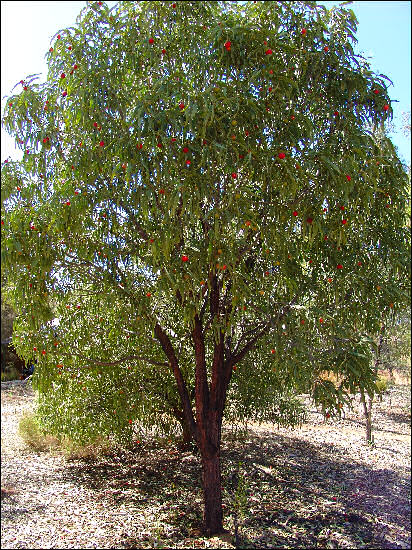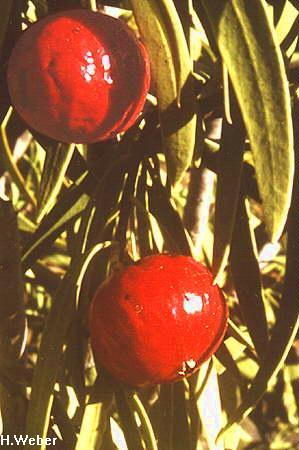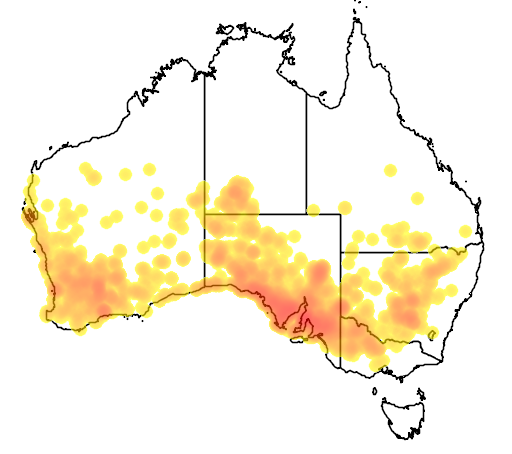Description
Common names
Quandong, Sweet Quandong, Native Peach, Desert Quandong, Sandalwood, Burn Burn, Katunga, Sweet Ouandong, Western Quandong.
Scientific names
Santalum acuminatum.
Family
Santalaceae.
Genus
Santalum.
Name origin
Santalum, from Greek santalon, the Sandalwood tree. Acuminatum, from Latin acuminatus, sharp or pointed, referring to leaves.
Rainfall
200-500mm.
Growth rate
Moderate.
Growth height
Up to 6m.
Presence in Australia
Mainly west of the Olympic Highway. Noted in the areas The Rock-Henty-Milbrulong; Boree; Brookong and Urangeline. Probably previously more widespread, but now confined to isolated patches.
This specie has been identified in the following Australian states: Qld, NSW, ACT, Vic, SA, NT, WA.
Habitat
Various woodland communities, sandy sites to gravelly ridges.
Habit
Erect spindly shrub or small shapely tree to 6m high. Spreading to drooping branches, and sparse pale to olive-green narrow leaves 3-9cm long, in opposite pairs.
Characteristics
Parasitic on roots of other plants, at least when young.
Flowering
Whitish or cream, spring-summer or throughout year.
Seed collection
Early Aug to late Nov. Monitor closely as seeds shed immediately or within 1-2 days of maturity.
Propagation
From seed. Before sowing, soak fruits in mild bleach solution for 30 minutes, then wash thoroughly in water. Sow fruits whole, or to hasten germination, gently crack or remove outer shells. Place nuts into sealed plastic bag with moist vermiculite and small amount of fungicide. Store at 16-250C. Seeds will germinate in 1-2 months. Carefully remove seeds when roots are about 1cm long and place in large containers. Plant seedlings in 12 months with host plants, such as native grasses. Alternatively, plant seeds directly over host roots.
Timber
Heartwood hard, close-grained, and flesh-coloured; sapwood creamy-pink. Emits pleasant fragrance when freshly cut. Works very well. Excellent for cabinet work, taking fine polish.
Koori
Wood used for making fire. Fruit useful food source. Scarlet acidic fruit pulp, rich in vitamin C was favoured, and sometimes a staple for short periods. Dried fruit from beneath trees soaked in water, or fashioned into cakes for storage. Oily kernels also eaten. Some trees produce sweet almond-flavoured kernels, while others produce distasteful ones.
Ornamental
Attractive.
Other
European settlers favoured quandong fruit for pies, jellies, jams and dried fruit. Foliage has some fodder value. Edible fruits suitable as "bush foods".



